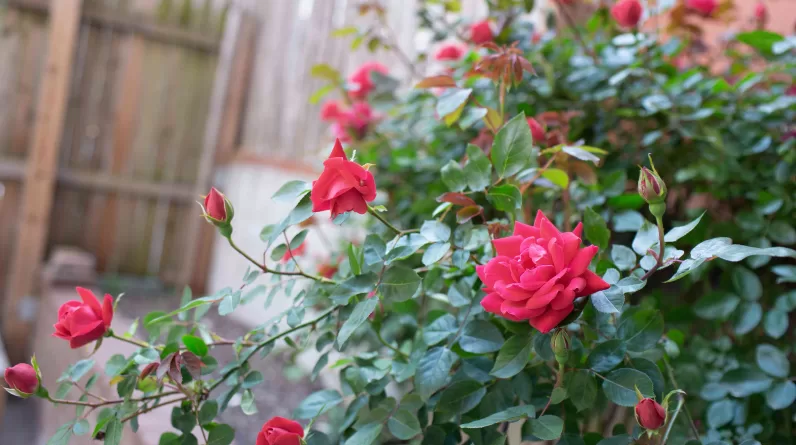The month of September brings us into autumn. If the luxuriance of summer blooms fades, you should already think about flowering your garden next spring, and for that, bulbs are essential! But some bulbs flower in summer and others in autumn, which means putting them in the ground at the right time as well.
Which bulb plants to choose?
Bulb plants have in common that they have a reserve organ containing nutrients stored during their growth period, which allows them to draw on them to survive during periods of dormancy and the rest of the vegetation. But when we talk about bulbs, it refers to various root structures that can be swollen, fleshy, or gnarled, destined to become pretty flowering plants. Depending on the plants, different names exist:
- the true bulb, the generic name, corresponds to the rounded shapes which can be tunicated or scaly. The tunicate bulbs have a central bud enclosed in tight layers of fleshy leaves, all enveloped in a brown and dry film: these are tulips, daffodils, narcissus … The scaly bulbs are distinguished by their looser layers. overlapping like scales, which makes them a little more fragile: these are lilies, varieties of fritillaries…
- The corm or corm has a swollen, thick, and rounded stem base carrying buds. We classify crocuses, freesia, crocosmia, or gladioli for example.
- the rhizome develops horizontally underground like a swollen stem carrying leaves, flowers, and buds. This is the case of agapanthus and iris, in particular.
- the tuber also forms a swollen underground stem, but which is oval, like a large potato, bearing buds or “eyes”. The dahlia is the most emblematic, with cyclamen, Begonia, or Alstroemeria.
When to plant bulbs in the garden?
You will choose the bulbs to put in your ornamental garden or your planters depending on the flowering seasons. As for the planting date, it takes place in the season preceding that of flowering, ignoring winter, which gives:
- Spring-flowering bulbs are planted in the ground in autumn, between September and November, pretending that winter doesn’t matter. They will flower more or less early in spring: from January-February for snowdrops, and from March to May for tulips, incarnations of bulbous plants par excellence: they offer a rich palette of shapes and colors with staggered flowering throughout. spring. Also think of anemone, crocus, fritillary, iris, hyacinth , lily, muscari, narcissus, ornithogale, squill…
- Summer flowering bulbs are planted in spring, between March and May, to see them flower during the summer, from June until September, or even October depending on the weather. Be careful, canna or dahlia bulbs fear winter frost, which is why they must be brought in before winter, but we appreciate their very long flowering which extends well into autumn. Lilies, more hardy, can remain in the ground. Also plant daylilies, montbretia, arum, tuberous begonia, agapanthus…
- less well-known are fall-flowering bulbs. They are planted in the ground in summer, sometimes as early as spring, to flourish in the fall. These are particularly cyclamen, colchicum, Sternberg, and nerine.
How to c Plant bulbs?
First of all, you will no doubt have noticed that some bulbs remain in the ground from one year to the next and will naturalize, while others must be pulled out either because they fear frost or because the flowering diminishes; this is particularly the case for dahlias, cannas, and certain tulips which quickly return to their botanical type. You must wait for the foliage to fade for spring bulbs or anticipate the first frosts for summer bulbs, then extract the bulbs to store them in a cool, dark, dry place.
Before you start planting bulbs, whatever the season, you will need to have prepared the soil, by removing weeds, amending it well in advance with well-rotted compost, and adding sand or gravel to improve its drainage if it is compact soil that remains damp which risks rotting the bulbs.
In the fall, plant small lawn bulbs (squills, grape hyacinths, crocuses, etc.) which will flower in the spring, trying to demarcate areas because you will have to wait until their foliage has faded to mow in these places! But maintain a natural effect by avoiding any regularity between them.
The bulbs are planted with the tip upwards, and the corms, rhizomes, and tubers are planted with the buds they carry upwards.
The depth should correspond to two to three times the height of the bulb, increasing this depth in sandy soil and for plants that are quite frost-prone. It is better to plant a little deeper than not deep enough as bulbs too close to the surface may not flower or may do so poorly with small flowers and short stems. Furthermore, squirrels and other rodents will have more difficulty digging them up after planting to eat them if they are buried a little deeper. However, this does not apply to bearded irises and begonias which prefer to be planted more superficially, just below the level of the soil.
You can use a bulb planter which removes a cone of soil to place the bulb there but do not leave a gap between the bottom and the bulb. Without a bulb planter, a mini hand shovel will do just fine.
No need to water the autumn planting of bulbs, the seasonal weather will take care of that naturally. On the other hand, bulbs planted in the spring and summer must be watered at the time of planting, but thereafter, they will generally get by without watering. If you notice a hot and dry period that lasts, do not hesitate to water them so that they start again, until they produce their first leaves.








